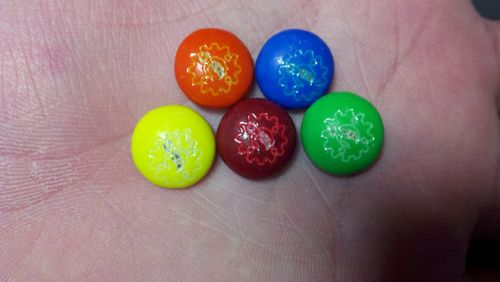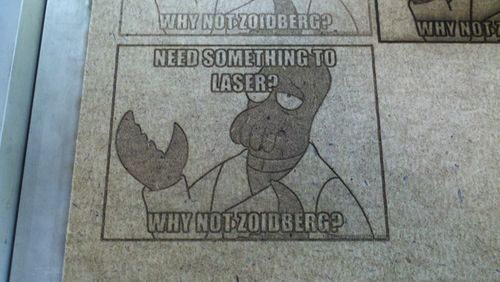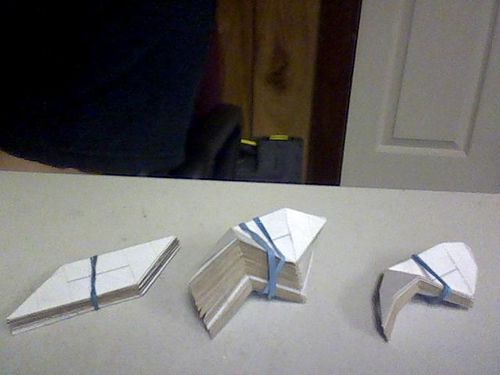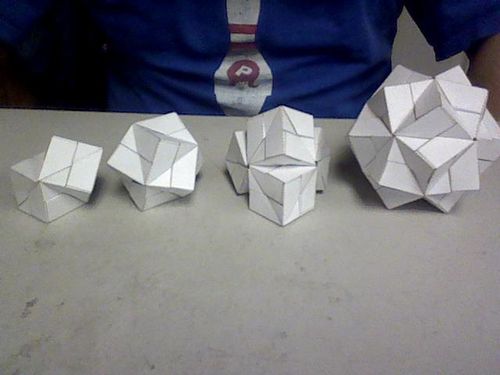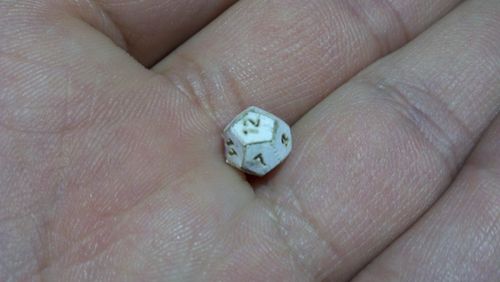40 Watt Laser Cutter
|
Creator: |
Contents
- 1 Calendar
- 2 Specifications
- 3 Overview
- 4 SAFETY
- 5 40W Full Spectrum Deluxe Hobby Laser
- 6 Raster Engraving Setting Suggestions
- 7 Vector Cutting Setting Suggestions
- 8 Other Vector Setting Suggestions
- 9 Polycarbonate
- 10 Software Notes & Troubleshooting
- 11 Proposed Upgrades
- 12 Images
- 13 Full Spectrum Website Resources
- 14 Software Resources
- 15 Software
- 16 More Stuff
- 17 Other More Stuff
Calendar
Past
- Mass group acrylic order: 40 Watt Laser Cutter/Acrylic Order
- Sci-Quest 3D Modeling Camp
- On Wednesday, July 18th and Thursday, July 19th I will need to reserve the Laser Cutter all night. I (and whoever wants to help) will do the laser cutting of the 123D Make models that kids doing the 3D Modeling camp at Sci-Quest are making. We'll be getting some money for this.
- On Wednesday, July 18th and Thursday, July 19th I will need to reserve the Laser Cutter all night. I (and whoever wants to help) will do the laser cutting of the 123D Make models that kids doing the 3D Modeling camp at Sci-Quest are making. We'll be getting some money for this.
- January 31 2012, 7:00pm - 9:00pm: Laser Cutter Class - Learn to use our Laser Cutter!
Specifications
Outside Dimensions (LxWxH): 31.5"x20"x12"
Net Weight: 70lbs
Maximum material size: 13"x16"
Maximum engrave-able area:9.5"x14.5"
Standard Lens: ZnSe 2" FL
Maximum material thickness: 2.75" (with Z table removed and 2" FL lens, 3.25" with optional 1.5" FL lens)
CO2 Laser Wavelength: 10.6um
Maximum Laser Power: 40W
Maximum Power Requirements: 660W (main laser unit only; excludes water pump/fan/computer/ accessories)
Overview
This is How to Use the laser cutter.
SAFETY
- Treat the Laser Cutter like an angry cobra and you should be just fine.
- As long as the safety mechanisms are working the laser is perfectly safe. If you defeat the magnetic safety interlock switch and run the laser with the case open, then you are exposing yourself to Class 4 Laser Radiation and you deserve what you get. Class 4 means that a coherent reflection can cause "DEVASTATING AND PERMANENT" eye damage with less than 1/100th second exposure, and even diffuse reflections are harmful within a certain distance. Add to that the fact that this is an infrared laser, which means the beam is invisible, and it falls more along the lines of an angry radioactive cobra. DO. NOT. DEFEAT. THE. SAFETY. INTERLOCK.
- Do Not Adjust The Current via the Control Knob. Use the Software Settings.
- DO NOT run the laser at greater than 15mA. Doing so will shorten the life span.
- >20mA will drastically shorten the lifespan.
- Replacement laser tubes are $300 a piece. Don't be a doofus.
- DO NOT run the laser at greater than 15mA. Doing so will shorten the life span.
- The big red E-STOP button is there for a reason. Use it if things go awry.
- What happens if you engrave or cut something containing hydrogen or vinyl chloride?
- If you don't know what's in the material you're engraving or cutting, you may have unintentionally cut or engraved items containing polyvinyl chloride. Performing this once or twice will likely not drastically damage your machine; however, continued engraving or cutting of this material will corrode the inside of your machine.
- A more important consideration are the potentially hazardous fumes that might be released from processing these materials. Some materials are quite toxic when burned and the damage to your health is much more important than the minor damage you might do to your machine.
- Material Safety Data Sheets are an invaluable resource for laser engravers. To protect your health and the life of your machine, always obtain a MSDS for materials about which you are uncertain.
- The above was taken from this site
40W Full Spectrum Deluxe Hobby Laser
HAVE A PATTERN TO CUT (the computer has internet and a couple of programs for editing images)
- Turn on the Laser and dedicated Laser Control Computer via Power Splitter. (classy? yes!)
- Make sure the Laser Control Computer boots into Windows, it really wants to be a linux box.
- Transfer the Pattern to the LCC
- On the Taskbar, click the RetinaEngrave icon (it looks like a blue triangle)
- When it has loaded, check to see that it is connected to the Laser Cutter (bottom left corner should say "Connected")
- Minimize it
- Open the Pattern
- Inkscape is suggested for Vector Mode
- Corel Draw is available, as is GIMP and a number of other programs
- Print the Pattern and make sure the "Full Spectrum Engineering Driver" is the selected printer
- RetinaEngrave should receive the pattern.
- See the table below for RetinaEngrave settings
- Insert the Material to be cut.
- Set the Laser's height based on the ruler. (picture below)
- Manually turn the height adjust wheel to raise or lower the bed.
- Be sure to click the "Perimeter" button in Retina engrave to verify that the Material is properly spaced, move the laser head as needed.
- Set the Laser's height based on the ruler. (picture below)
- Click the "Go" button to begin cutting.
- You can do a test run by leaving the door open. The laser head will move, but the laser will not engage.
WHEN YOU ARE DONE
- There is a 'Shutdown' link on the desktop that turns the computer off
- Flip the power button on the Power Splitter
- Blow the water out of the Laser Tube in the Orange Bucket (to prevent freezing)
Raster Engraving Setting Suggestions
| Material | Speed | Power | Resolution | Notes |
|---|---|---|---|---|
| Acrylic | 100% | 5-10mA | 250 DPI | |
| ABS Sheet, Black | 100% | 10mA | 500 DPI | Does not engrave well on textured ABS, but the smooth side of the sheet does engrave well. |
| Tempered Fiberboard | 100% | ? | ? | |
| Basswood | 100% | 7.5mA | 500 DPI | |
| Cardstock, 110 lb, White | 100% | ? | 250 DPI | Old info had "0.75-2 turns of the knob" for power. |
| Laser Frost Sheet | 100% | 5mA | 500 DPI | |
| AlumaMark Sheet, Satin Silver | 100% | 15mA | 500 DPI | |
| Spray Paint, Black, Glossy | 5% | 4mA | 500 DPI |
Vector Cutting Setting Suggestions
| Material | Thickness | Speed | Power | Repetitions | Notes |
|---|---|---|---|---|---|
| Acrylic | 1/4" | 30% | 100% | 2(3) | Also known as Plexiglas, Lucite, and Perspex. (Darker acrylic needs more reps) |
| 1/8" | 30% | 100% | 1 | ||
| ABS Sheet, Black, Textured | 1/16" | 15% | 100% | 1 | |
| Tempered Fiberboard | 3/16" | 30% | 100% | 3 | |
| 1/8" | ? | ? | ? | ||
| Luan Plywood | 5.2mm | 20% | 100% | 3 | For best results, focus the laser about halfway through the material. Still not a super clean cut, but it's easy enough to punch out each piece. |
| Sandeply Wood | 5.2mm | 30% | 100% | 2 | For best results, focus the laser about halfway through the material. Much better cut than the Luan Plywood. |
| Basswood | 3/32" | 35% | 100% | 1 | |
| Cardstock, 110 lb, White | N/A | 100% | 10% | 1 | |
| Cereal Box Cardboard | N/A | 100% | 100% | 2 | |
| Laserboard | 0.020" | 80% | 40% | 1 | Can be found at Automated Artists |
| 0.011" | 80% | 30% | 1 | ||
| Foamcore, with paper | 3/16" | 100% | 40% | 2 | This is the foamboard found at the Dollar Tree. |
| Foamcore, paper removed | 3/16" | 100% | 1% | 1 | This is the foamboard found at the Dollar Tree, but with the paper peeled off. |
| Craft Foam sheet | 0.075" | 100% | 10-20% | 1-2 | Crafting foam sheet from Hobby Lobby. If using 20%, use one pass; 10% use two or more passes. |
| Hobby Lobby Stencil Sheet | N/A | 100% | 15% | 1 | Also known as mylar sheet. Remove the plastic covering before cutting. |
| Blue Painter's Tape (2 Layers) | N/A | 100% | 10% | 1 | For best results, attach the tape to another medium first, like cardboard or plywood. This keeps the tape from moving and warping while being cut. |
| High Density Fiberboard (HDF) | 1/4" | 100% | 90% | 30-35 | This does not appear to cut well anymore; possible due to wear on the laser, or buildup on the lens. |
| Polycarbonate | N/A | N/A | N/A | N/A | Please do not cut polycarbonate on the laser. It releases chemicals that may be bad for you and the laser, and doesn't even cut well. Also known as Lexan, Makrolon, and Makroclear. |
Other Vector Setting Suggestions
| Material | Thickness | Speed | Power | Repetitions | Notes |
|---|---|---|---|---|---|
| Cardstock, 110 lb, White | N/A | 100% | 0.5% | 1 | This will not cut all the way through, making for good fold lines. |
| Cereal Box Cardboard | N/A | 100% | 10% | 1 | Makes a nice, dark vector engrave line. |
| Laserboard | N/A | 100% | 1% | 1 | Makes a nice, dark vector engrave line. |
| Sugar, Table, Granulated | N/A | 100% | 10% | 1 | Putting the laser about 2mm out of focus seems to help it not burn as badly. |
| Fig Newtons | N/A | 100% | 0.2% | 1 | For best results, focus the beam on the pan, rather than on top of the cookie |
Polycarbonate
- I've heard several opinions as to whether or not it is safe to cut polycarbonate on the laser cutter, so I've tried to look into it a bit.
- I have determined that, with the recent upgrade to the ventilation system, polycarbonate should be safe to laser cut here at the makeshop.
- I have also read, but not verified, that freezing the material before cutting may help achieve better results. (ie. cleaner edges, less browning, etc.)
- A few references:
- US Plastic Corporation: Can polycarbonate be laser cut?
- cnczone.com forums
- epiloglaser.com
- ponko.com
- instructables.com Post from "pedalmonkey" about halfway down has some good advice on cutting/polishing
- CR4 forums
Software Notes & Troubleshooting
RasterEngrave
- Make sure if you are trying to laser a raster you don't have the IGNORE RASTER checkbox checked in the raster engrave control panel under "Import Options"!
Inkscape
General
- Snapping is your friend.
- IMPORTANT! The following caused a lot of problems and frustration before we figured out this was the problem. Make sure the paper size (letter vs legal vs whatever other size) is set correctly in the windows print dialog when printing to the laser. It is not sufficient to just have it set correctly inside the Inkscape document properties! If the paper size in the print dialog settings isn't equal or larger that the document size in Inkscape, then you may have vector shapes missing when sending the drawing over to the laser. Any shape that starts "on" the paper then hangs off the edge will show up but any shapes that don't start on the page and are completely "off" the page then they won't show up on the laser engrave.
- Sometimes the picture you're using will have "Stroke" set to none. This is located in the bottom left hand corner of Inkscape. Make sure the stroke is set to a color. Click on the line and then right click on a color and set stroke. Set different colors if you want raster engrave to see different colors.
Making perforated lines:
(for creating perforated fold lines on cardstock paper)
- Draw the lines
- Select the line you want to be perforated
- Got to "Object->Fill and Stroke"
- Under "Stroke Style" set:
- Width = 0.1mm (remember to set unit to mm in the box next to it)
- Dashes = 5th to 7th dashed line down in the selection box
- go to "Extensions->Modify Path->Convert to Dashes"
- try to do this as close to printing as possible, as moving and editing the lines after you convert to dashes is
a pain in the assinconvenient.
- try to do this as close to printing as possible, as moving and editing the lines after you convert to dashes is
- Suggested laser settings: S:100% P:0.5-10% (0.5% will make perforations most of the way through the page. 10% will go all the way through. Both usually leave enough material between the holes to maintain material strength, but sometimes the higher power one can be easier to fold, though slightly weaker. Tweak depending on how close your dots are, application, and personal preference. My personal preference is 0.5)
Making gears:
- Go to "Extensions->Render->Gear"
- Pick your gear's properties and hit "Apply"
- Notes:
- Pressure Angle controls the shape of the tooth.
- 20 degrees is industry standard for general use gears.
- Circular Pitch controls the distance between teeth. Changing this usually just has the effect of scaling the size of the gear up and down.
- 20 seems to make a modest size gear.
- To make a gear with the teeth on the inside(like for a planetary gear set) just use the same process, but maybe put a circle around the outside.
- Protip: As long as pressure angle and circular pitch are the same for two gears, their teeth will fit together regardless of how many teeth each has.
- Caution: If you scale the gears after their creation, then you are effectively changing their circular pitch, and they won't fit together with any other unscaled gears
- Pressure Angle controls the shape of the tooth.
- Notes:
- To add holes to the center of gears, make a circle(or what ever shape) and use the "Snap to and from centers of objects" button on the far right toolbar to line it up to the center of the gear.
- 8mm circles for holes seem to work rather well as a starting point
HyCad
General
- 1 unit == 1mm in HyCad
- to print accurately sized shapes, go to "File->Print Preview" and make sure that "Scale" = 1
Pepakura
General
- To print perforated joints, go to "Settings->Other Settings" and set the dotted line settings to be ~ Line= 0.1, Gap= 0.5 or 0.4 for the mountain/valley fold lines. This will produce a nice dotted line down to even very small scales and doesn't burn too much material, so the joint still remains fairly strong. Suggested laser settings: S:100 P:0.5
- blahblahblah need to add some stuff about setting up the print settings and color layers blahblahblah --Candleknight (talk)
Proposed Upgrades
Beam Combiner
Function: Combines the aiming laser beam in with the cutting laser beam. This makes the aiming laser take the same path as the cutting laser and pass through the lens aperture. This takes the beam from a slopy 0.25" beam that shoots in from the side to a very tight 0.001" beam that comes from the cutting aperture and illuminates the exact spot the cutting beam will hit.
Use: I think it would be especially useful for precision alignment of work or for jobs that require multiple stages. (ex: print a design off on a normal printer, then line the laser cutter up to precisely cut out the pattern)
Cost: $300
Current Pledges:
- Candleknight: $100-150
- Phil: $50-100
Ventilation Improvement (Completed)
***UPDATE*** Project finished and installed! It works like a charm. You can stick your nose right up to the laser cutter while it's cutting acrylic, and you can't smell a thing.
No more stinky shop! No more lung damage!! Huzzah! HUZZAH!
Function: Improve the ventilation of the laser cutter's exhaust, both in how hard it sucks and where it lets out.
Use:
- Not dying a slow death from deadly laser fumes.
- General not stinky-ness of the electronics room.
- Help keep inside of laser cutter cleaner.
Possible Materials:
"Finalized" Materials List:
- 1x 8" InLine blower Fan @ $120
- 3x 8" ducting @ $25 each = $75
- 1x Blower Speed Controller @ $22
Total cost ≈ $217 = $215.95
Project Financing Signup:
- Phil: $80
- Jeff: $15 ( I WILL forget about this, please ping me )
- Scott Savage: $22
- David Reimer: $???
Research
- Static Pressure Calcuations
- McMaster Carr page on Fume Exhaust Fans
- McMaster Carr page on Fume Exhaust Enclosures. In particular, look at the cfm flow rate for the fume exhaust hood that looks about the same size as the laser cutter (item 20995K61). It takes 200CFM @ 0 Static Pressure
Images
Full Spectrum Website Resources
40W Hobby Laser User Manual
RetinaEngrave User Manual
40W CO2 Deluxe Hobby Laser Product Page
FullSpectrumEngineering Forums
Software Resources
Software
123D (by AutoDesk)
More Stuff
